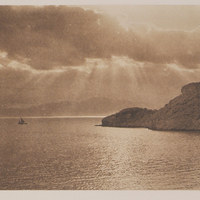Ναός του Αγίου Ρόκκου
Αντικείμενο
Τίτλος Σημείου Ενδιαφέροντος
el
Ναός του Αγίου Ρόκκου
en
Saint Rocco Church
Περιγραφή / Απόσπασμα
53
en
Most of the churches, both Greek and Latin, have been converted into mosques: the chapel of San Rocco is however still recognized by the following inscription on the frieze of its entablature: DEO O. M. ET D. ROCCO DICATVM MDCXXX.
Σύγχρονη περιγραφή
el
Ο ναός του Αγίου Ρόκκου βρίσκεται στην βορειοδυτική άκρη της πλατείας της Σπλάντζιας, στο κέντρο της παλιάς πόλης των Χανίων και είναι ένα από τα πιο σημαντικά Ενετικά Μνημεία. Η ανέγερση του ναού έγινε το 1630, πιθανότατα μετά την εκδήλωση της πανώλης, καθώς θεωρείται ότι ο Άγιος προστάτευσε την πόλη από αυτή την επιδημία.
Ο Ναός του Αγίου Ρόκκου των Χανίων ανήκε στον Ενετικό Οίκο Paolini. Το εντυπωσιακό αυτό λατρευτικό κτήριο έχει σχεδόν τετράγωνο σχήμα και παρουσιάζει αναγεννησιακά στοιχεία που του προσδίδουν ιδιαιτερότητα. Στην κύρια δυτική όψη υπάρχει ένα θύρωμα, ένα ορθογώνιο πλαίσιο για επιγραφή και ένας στρογγυλός φεγγίτης στη μέση του αετώματος, το λεγόμενο «μάτι του βοδιού». Στη νότια όψη το κέντρο καταλαμβάνει πάλι ένα θύρωμα με τριγωνικό αέτωμα και δυο μεγάλα παράθυρα και κάτω από το γείσο υπάρχει επιγραφή στα λατινικά, που σημαίνει : «Αφιερωμένο στον άριστο και μέγιστο Θεό και στον Θείο Ρόκκο. 1630».
Στη διάρκεια της Tουρκοκρατίας λειτούργησε ως στρατιωτικό φυλάκιο, ενώ κατά τη διάρκεια της Κρητικής Πολιτείας και έως το 1925 ως κεντρικός σταθμός χωροφυλακής της πόλης. Προφανώς οι Οθωμανοί κατακτητές σεβάστηκαν αυτό τον ναό και απέφυγαν να τον καταστρέψουν για τον «φόβο του Αγίου».
Σήμερα, ο ναός του Αγίου Ρόκκου είναι επισκέψιμος, καθώς διατηρείται σε αρκετά καλή κατάσταση.
Ο Ναός του Αγίου Ρόκκου των Χανίων ανήκε στον Ενετικό Οίκο Paolini. Το εντυπωσιακό αυτό λατρευτικό κτήριο έχει σχεδόν τετράγωνο σχήμα και παρουσιάζει αναγεννησιακά στοιχεία που του προσδίδουν ιδιαιτερότητα. Στην κύρια δυτική όψη υπάρχει ένα θύρωμα, ένα ορθογώνιο πλαίσιο για επιγραφή και ένας στρογγυλός φεγγίτης στη μέση του αετώματος, το λεγόμενο «μάτι του βοδιού». Στη νότια όψη το κέντρο καταλαμβάνει πάλι ένα θύρωμα με τριγωνικό αέτωμα και δυο μεγάλα παράθυρα και κάτω από το γείσο υπάρχει επιγραφή στα λατινικά, που σημαίνει : «Αφιερωμένο στον άριστο και μέγιστο Θεό και στον Θείο Ρόκκο. 1630».
Στη διάρκεια της Tουρκοκρατίας λειτούργησε ως στρατιωτικό φυλάκιο, ενώ κατά τη διάρκεια της Κρητικής Πολιτείας και έως το 1925 ως κεντρικός σταθμός χωροφυλακής της πόλης. Προφανώς οι Οθωμανοί κατακτητές σεβάστηκαν αυτό τον ναό και απέφυγαν να τον καταστρέψουν για τον «φόβο του Αγίου».
Σήμερα, ο ναός του Αγίου Ρόκκου είναι επισκέψιμος, καθώς διατηρείται σε αρκετά καλή κατάσταση.
en
The church of St. Rocco is situated at the northwestern edge of the square of Splantzia, in the center of the old city of Hania and it is one of the most important Venetian monuments. The construction of the temple took place in 1630, most possibly after the outbreak of the plague, as was believed that the Saint protected the city from the epidemic.
The church of St. Rocco of Hania belonged to the Venetian House of Paolini. This impressive building of worship is almost square in shape and features renaissance elements which make it more special. At the main western facade, there is a side frame, a rectangular frame for inscription and a round skylight in the middle of the pediment, the so-called “eye of the bull” (occhio di bue). At the southern facade, the center is still taken over by a side frame with a triangular pediment and two big windows, and under the eave there is an inscription in Latin, which says: “Dedicated to the excellent and supreme God and Divine Rocco. 1630”.
During the Ottoman rule, the church operated as a military outpost, while during the Cretan State period and up until 1925, it was a central station for the gendarmerie of the city. Obviously, the Ottoman conquerors respected this temple and avoided its destruction for “fear of the Saint”.
Today, the church of St. Rocco is open to visitors, as it is kept in a pretty good state.
The church of St. Rocco of Hania belonged to the Venetian House of Paolini. This impressive building of worship is almost square in shape and features renaissance elements which make it more special. At the main western facade, there is a side frame, a rectangular frame for inscription and a round skylight in the middle of the pediment, the so-called “eye of the bull” (occhio di bue). At the southern facade, the center is still taken over by a side frame with a triangular pediment and two big windows, and under the eave there is an inscription in Latin, which says: “Dedicated to the excellent and supreme God and Divine Rocco. 1630”.
During the Ottoman rule, the church operated as a military outpost, while during the Cretan State period and up until 1925, it was a central station for the gendarmerie of the city. Obviously, the Ottoman conquerors respected this temple and avoided its destruction for “fear of the Saint”.
Today, the church of St. Rocco is open to visitors, as it is kept in a pretty good state.




